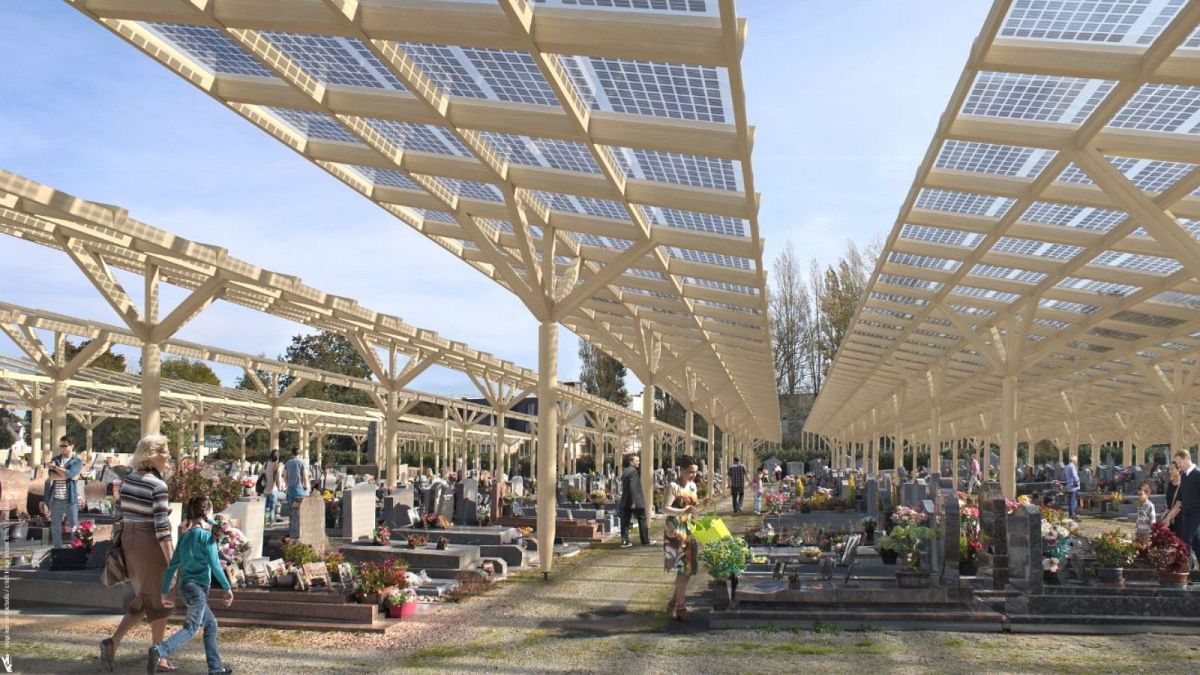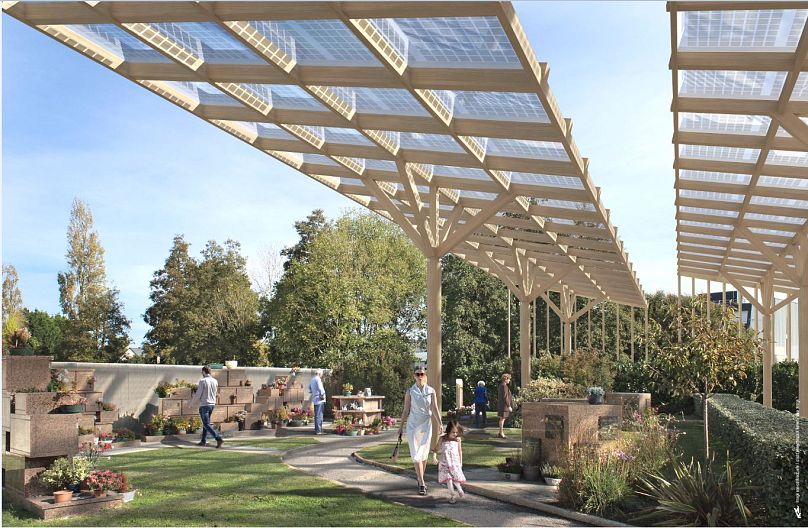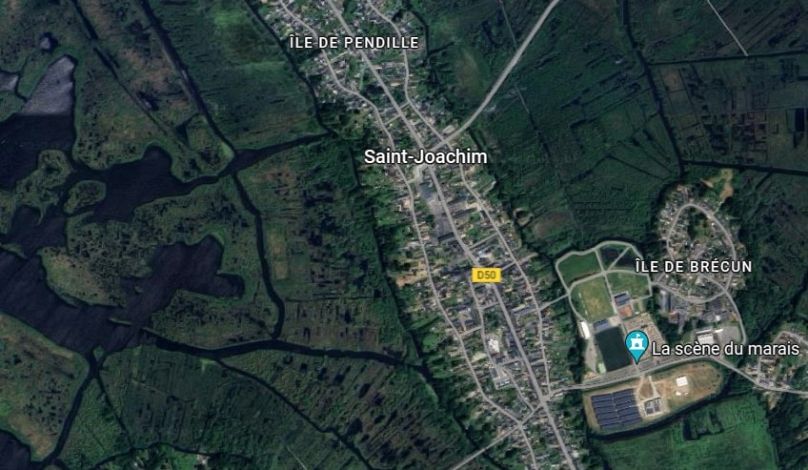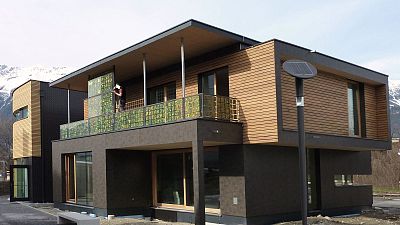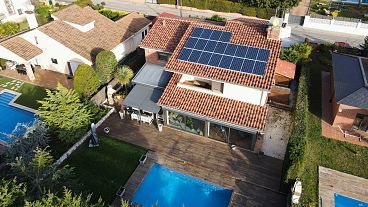Residents in Saint-Joachim can join this unusual community energy scheme for just €5.
A French town is installing a canopy of solar panels over its cemetery that will distribute energy to local residents.
The idea didn’t start with solar. Saint-Joachim is located in the middle of the Brière marsh - a vast peat bog north of the Loire estuary.
When it outgrew its churchyard cemetery in 1970, a new graveyard was created to the east of the town’s main island, a drop from six to zero metres above sea level.
Upsettingly for families with loved ones buried there, that means the cemetery often floods in winter. Draining the ground would be a constant battle with the wetland, so Saint-Joachim’s mayor proposed covering the site to stop it from filling up with rainwater.
Since the town can also get too dry in summer, the second idea was to reuse this water for the parched grass of the adjacent sports club and other greenery.
Solar panels were the final touch - a way to make electricity from an otherwise redundant surface.
Saint-Joachim has been ahead of the curve on renewables; it installed photovoltaic panels on municipal roofs back in 2012. So when the project was suggested in 2021, the town decided to offer this new solar electricity to residents.
The solar canopy will be a communal source of energy
The cemetery location seems like the most striking part of the solar project, with eye-catching architectural mock-ups of how the 1.3-megawatt (MW) canopy will look.
But an even more unusual aspect is the equal way the energy will be distributed.
This is what attracted Éric Broquaire, local resident and president of Brier’energie association to take up his role. “To me, it was very interesting to have a common project,” he tells Euronews Green.
Most energy initiatives take a top-down approach, but the Saint-Joachim cemetery project is co-built by the citizens. Briérons (as locals are called) were contacted with a letter asking for their views and 97 per cent were in favour.
In the town of around 4,000 people, some 420 residents have officially registered their interest in joining the project. For an entry fee of just €5, they will eventually have a share in the energy it produces.
Broquaire expects that when others see the project begin, they’ll be rushing to sign up too. A prototype is being installed in a 180 square metre patch of the 5,000 square metre cemetery this weekend (18 March), giving everyone a clearer idea of what the much-anticipated design will look like.
How will the communal solar cemetery project work?
“In France, we have never carried out a project of sharing electricity with such a quantity of people,” says Broquaire, whose full-time job is in shipbuilding. 10 people is around the usual amount for a shared solar set-up.
“Here it will be the first time with more than 1,000 people we will share electricity without payment,” he adds. With an average household in Saint-Joachim home to two people, 1,000 connections to the electricity grid equates to at least 2,000 people being served.
If the new solar source were to entirely meet the power needs of the closest homes, it would cover around 20 per cent of the town or 800 people.
But splitting the solar electricity among them equally requires a new method, based on an algorithm that must be built from scratch.
Physically, it is not possible to portion out electricity individually, Broquaire explains. Instead, the technology will take 30 minute readings from consumers, and from the solar canopy. At the end of every month, this encrypted data will enable French grid operator Enedis to work out what deductions are due to each participant.
Brier'energie estimates that households will save an average of €150 to €250 on their annual electricity bills.
“The purpose was to make it simple, to avoid someone saying ‘why don’t I have electricity for free’. Everybody, even companies, will have the same level,” Broquaire says.
The big supermarket will get the same amount as Saint-Joachim’s bakery and hairdresser, for example.
What else do we know about Saint-Joachim’s unique solar project?
The energy association president says he understands why some people don’t think a graveyard is the best place to produce electricity - but stresses this wasn’t the project's first aim.
Visiting the site on Sunday, he says it was difficult to walk around the grave paths in places, due to heavy rains in January and February. People are agreed on the need for action.
But of course, a graveyard is no ordinary building site. In the architectural model commissioned by the municipality, the canopy will be semi-transparent to let light through, using a specific kind of solar panel.
“I think it is a beautiful idea,” Broquaire says, that could be replicated elsewhere. “Either to join people from the town to build the project together, or the idea to provide free electricity to the citizens, and to start to become self-sufficient.”
The municipality is fully financing the €3.35 million installation, using tax gains from a seven per cent property tax increase last year.
Saint-Joachim’s solar cemetery is due to start providing people with a cheap, clean flow of electricity in summer 2025.
